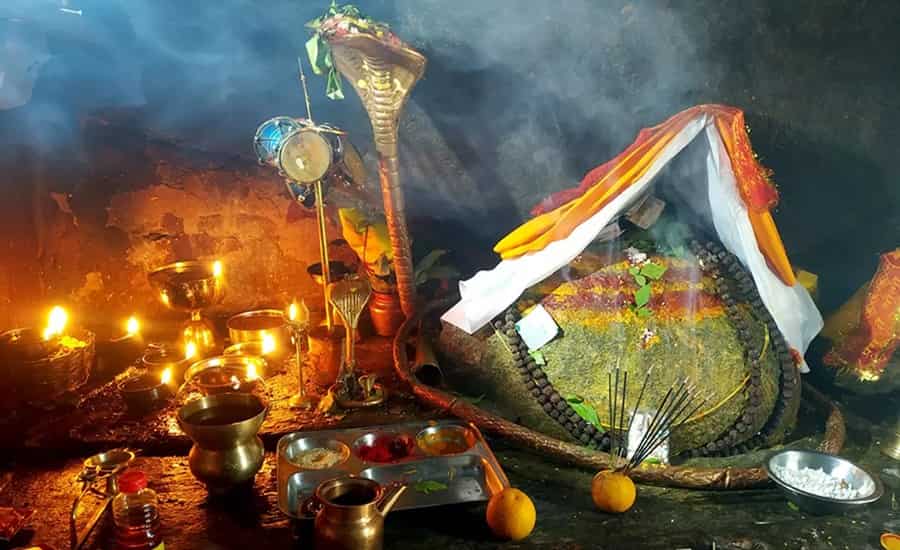The history of Kalpeshwar Temple intertwines with the rich tapestry of Hindu mythology, tracing its roots to the ancient legends of the Panch Kedar and the illustrious Pandava brothers from the epic Mahabharata. Situated in the serene Garhwal region of the Indian Himalayas, Kalpeshwar Temple stands as a testament to devotion and spiritual significance.

The Pandavas’ Quest for Redemption
The history of Kalpeshwar Temple is rooted in the ancient legends of the Panch Kedar and the renowned Pandava brothers from the epic Mahabharata. After emerging victorious in the Kurukshetra war, the Pandavas sought to absolve themselves of the sins incurred during the conflict, including fratricide and the killing of Brahmins.
Journey to Find Lord Shiva
Renouncing their kingdom, the Pandavas embarked on a pilgrimage to seek the blessings of Lord Shiva, the supreme deity of Hinduism. Their journey began in the holy city of Varanasi, where Shiva, still aggrieved by the war’s events, eluded them by assuming the form of a bull.
Discovery at Guptakashi
Undeterred by their initial setback, the Pandavas ventured into the Garhwal Himalayas, where Bhima, one of the brothers, encountered a bull grazing near Guptakashi. Recognizing the bull as Shiva, Bhima attempted to restrain it, marking a pivotal moment in their quest for spiritual redemption.
Divine Manifestations
In a remarkable revelation, Shiva’s form began to manifest across different locations in the region. His hump surfaced in Kedarnath, his arms appeared in Tungnath, his face revealed itself at Rudranath, his navel and stomach emerged in Madhyamaheshwar, and his hair manifested at Kalpeshwar.
Construction of Temples
Grateful for Shiva’s reappearance and guidance, the Pandavas erected temples at these sacred sites, thus initiating the worship of Shiva in his various forms, collectively known as the Panch Kedar. These temples not only honored the divine but also served as symbols of spiritual liberation for the Pandavas.
Symbolism of Spiritual Liberation
Regardless of the interpretation of the legend, the essence remains consistent—the Panch Kedar Temples, including Kalpeshwar, hold profound significance in Hindu mythology and pilgrimage. They symbolize the eternal quest for divine grace and spiritual fulfillment.
Temple Priests and Rituals
The worship at Kalpeshwar Temple is overseen by temple priests belonging to the esteemed Dasnami and Gosain sects, disciples of the revered philosopher Adi Shankara. These priests uphold the sanctity of the temple by following the traditions established by Adi Shankara himself.
Pilgrimage Experience
The pilgrimage to Kalpeshwar Temple transcends a mere physical journey; it offers devotees an opportunity for introspection, devotion, and divine communion. Amidst the breathtaking natural beauty of the Himalayas, pilgrims embark on a quest for inner transformation and enlightenment.
Continuing Spiritual Relevance
Through centuries, Kalpeshwar Temple has remained a beacon of devotion, drawing pilgrims and seekers from far and wide. Its sacred presence amidst the majestic Himalayas continues to inspire and uplift all who seek solace and transcendence in its hallowed precincts.
In conclusion, the history of Kalpeshwar Temple epitomizes the profound connection between mythology, spirituality, and pilgrimage, inviting devotees to embark on a journey of self-discovery and divine communion amidst the serene beauty of the Garhwal Himalayas.
Also Read:

 Call
Call WhatsApp
WhatsApp Enquiry
Enquiry